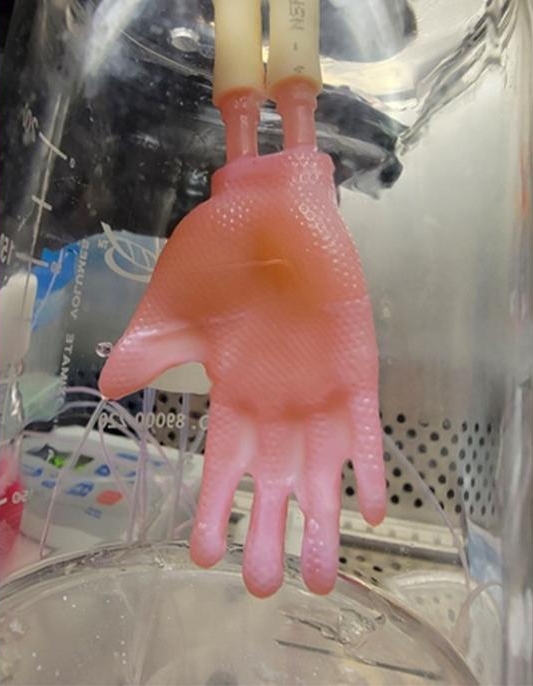Bioengineers at Columbia University have developed a new way to grow engineered skin in three-dimensional shapes, which has many benefits for skin grafts. This development would allow for seamless “gloves” of skin cells to be easily slipped onto a severely burned hand.
The process starts with a 3D laser scan of the target structure and a 3D permeable model of the structure is created using computer-aided design and 3D printing. The exterior of the model is seeded with skin fibroblasts and collagen, while the inside is perfused with growth media.
If you think that sounds like a scene from the 1990 Sam Raimi superhero movie “Darkman”, where a scientist injured in a fire uses a form of proto-3D printing to print new skin, then you’re not wrong.
Take a look at the image below, which looks exactly like it came from that movie!

“Three-dimensional skin constructs that can be transplanted as ‘biological clothing’ would have many advantages,” said Hasan Erbil Abaci, PhD, assistant professor of dermatology at Columbia University Vagelos College of Physicians and Surgeons.
“They would dramatically minimize the need for suturing, reduce the length of surgeries, and improve aesthetic outcomes.”
In the first test of the 3D engineered skin, constructs composed of human skin cells were successfully grafted onto the hind limbs of mice. This is the first major redesign of engineered skin grafts since they were first introduced in the 1980s and it is hoped that in the future, these grafts can be custom-made from a patient’s own cells.
The potential for these 3D grafts is not limited to just skin and face transplants but can also be used for other organs.
Come and let us know your thoughts on our Facebook, Twitter, and LinkedIn pages, and don’t forget to sign up for our weekly additive manufacturing newsletter to get all the latest stories delivered right to your inbox.










